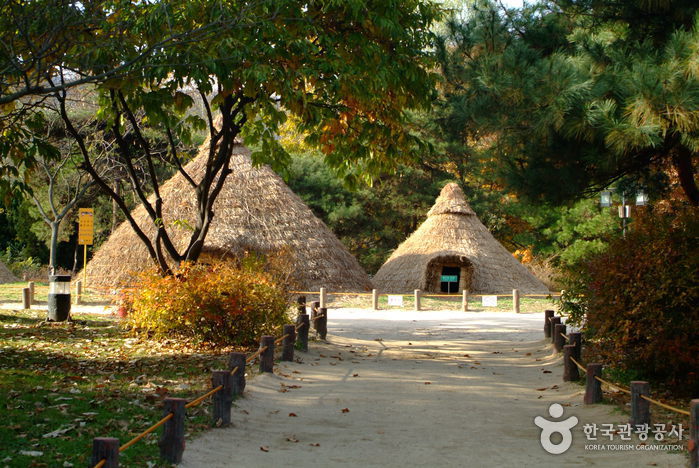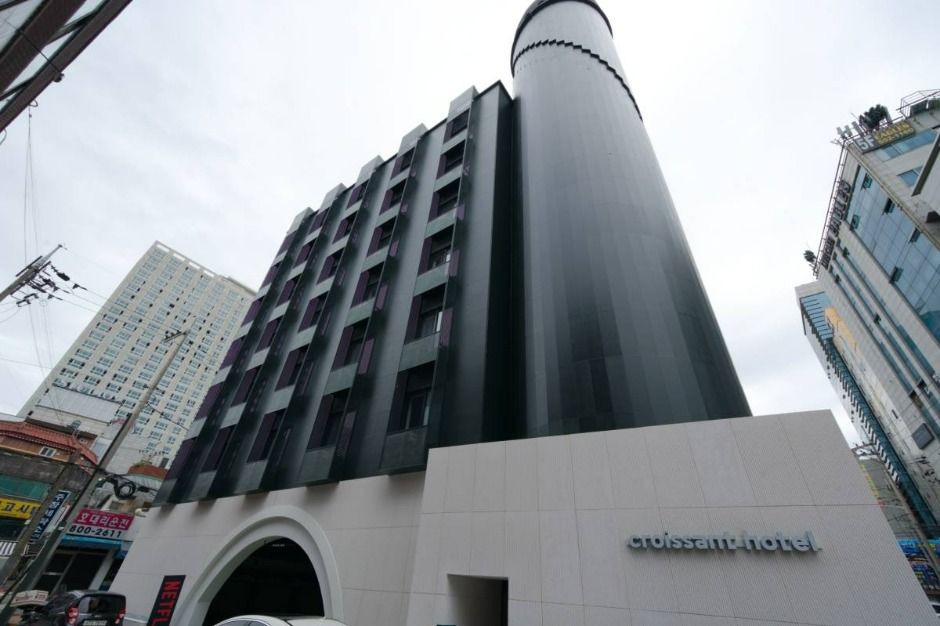Galaxy Lifestyle - Lotte Guri Branch [Tax Refund Shop] (갤럭시라이프스타일 롯데 구리점)
6.2Km 2024-04-18
261, Gyeongchun-ro, Guri-si, Gyeonggi-do
-
Artbox - Guri Branch [Tax Refund Shop] (아트박스 구리)
6.3Km 2024-04-19
A section and 2F, 247, Gyeongchun-ro, Guri-si, Gyeonggi-do
-
Olive Young - Guri Station Branch [Tax Refund Shop] (올리브영 구리역)
6.3Km 2024-04-18
247, Gyeongchun-ro, Guri-si, Gyeonggi-do
-
Archaeological Site in Amsa-dong, Seoul (서울 암사동 유적)
6.4Km 2021-07-27
875, Olympic-ro, Gangdong-gu, Seoul
+82-2-3425-6520
The Archaeological Site in Amsa-dong reproduces the lifestyle of the Neolithic Era. Even the entrance gate is shaped like a huge dolmen and the trash cans are ancient diagonal-line patterned earthenware. Archaeological Site in Amsa-dong was excavated in 1925 when a flood washed away the soil on the banks of the Hangang River and exposed a large number of diagonal-line patterned earthenware. After several excavations, the Archaeological Site in Amsa-dong was established.
The site was a location for a massive colony, thus many ancient buildings, stone axes and stone arrows have been uncovered as well as countless diagonal-line patterned earthenware. The housing site is round with a spot in the center for fire. The site is colossal and possesses nine mud huts, two exhibition halls displaying ancient artifacts and an open mud hut where visitors can experience life in the Neolithic Era. The site offers many attractions such as mud huts and promenades. Archaeological Site in Amsa-dong is also very educational for children and families who want to learn and experience the Neolithic Age.
Amsa-dong Prehistoric Site Museum (암사동선사유적박물관)
6.4Km 2023-12-22
875 Olympic-ro, Gangdong-gu, Seoul
The archaeological sites in Amsa-dong, Seoul, were a collective settlement where people lived during the Neolithic Age about 6,000 years ago and became known to the world after the sand dunes along the Hangang River caved in during the great flood of 1925, exposing numerous pieces of comb-patterned pottery. The area designated as a historic site in 1979, and excavation of the site took place from 1981 to 1988. The cultural heritage protection area was expanded to a total area of 78,133㎡. Currently, nine Neolithic dugout huts and one experiential dugout hut have been restored. The exhibitions currently open to the public are Exhibition Hall 1, which displays a restoration of a Neolithic Age dugout, and Exhibition Hall 2, which displays various panels and models to help understand the prehistoric era as a whole.
Aritaum - Guri Doldari Sageori Branch [Tax Refund Shop] (아리따움 구리돌다리사거리)
6.5Km 2024-04-18
1F, 212, Gyeongchun-ro, Guri-si, Gyeonggi-do
-
The Hyoosik Croissant Hotel Guri (더휴식 크로와상호텔 구리점)
6.5Km 2025-04-08
148 Cheyukgwan-ro, Guri-si, Gyeonggi-do
The Hyoosik Croissant Hotel Guri offers a variety of theme-based room types for both leisure and relaxation, such as a standard music room with blutooth speakers, a deluxe home-training room with yoga equipment, a deluxe couple room with high-end gaming PC, a deluxe healing room with a lounge chair, a twin bedroom, a game suite room with Playstation 4 Pro, a movie suite room with a beam projector, a sing suite room with noraebang equipment and soundproof walls, and a party suite room with a kitchenette. The hotel also has a parking lot, guest lounge, rooftop area, and coin laundry.
Olive Young - Hyundai Premium Outlet Space 1 Branch [Tax Refund Shop] (올리브영 현대프리미엄아울렛스페이스원점)
6.7Km 2024-06-26
3F, 50, Dasansunhwan-ro, Namyangju-si, Gyeonggi-do
-
Hongneung and Yureung Royal Tombs [UNESCO World Heritage] (남양주 홍릉(고종과 명성황후)과 유릉(순종과 순명,순정 황후) [유네스코 세계문화유산])
6.8Km 2021-07-19
352-1, Hongyureung-ro, Namyangju-si, Gyeonggi-do
+82-31-591-7043
Hongneung and Yureung Royal Tombs is Historic Site No. 207. Hongneung Tomb is the resting place of Emperor Gojong and his wife Empress Myeongseong, while Yureung Tomb is the resting place of Emperor Sunjong, his first wife Empress Sunmyeonghyo, and his second wife, Empress Sunjeonghyo. Hongneung and Yureung look different from other royal tombs. When the name of the country changed from the Joseon dynasty to the Daehan Empire, the rulers of Korea were called emperors. Therefore, the tombs of the two emperors were modeled after the tomb of the Ming dynasty’s ruler, King Taizu (Zhu Yuanzhang). Surrounding Hongneung and Yureung are statues carved in the shape of animals such as giraffes, elephants, and lions, which can’t be seen at the other royal tombs of the Joseon dynasty. The stonework of Hongneung tomb was made in a traditional way, while the stonework of Yureung tomb shows a more realistic and advanced technique.
LG Best Shop - Gangdong Main Branch [Tax Refund Shop] (엘지베스트샵 강동 본점)
6.8Km 2024-04-19
1449, Yangjae-daero, Gangdong-gu, Seoul
-
![Galaxy Lifestyle - Lotte Guri Branch [Tax Refund Shop] (갤럭시라이프스타일 롯데 구리점)](http://tong.visitkorea.or.kr/cms/resource/87/2890387_image2_1.jpg)

![Olive Young - Guri Station Branch [Tax Refund Shop] (올리브영 구리역)](http://tong.visitkorea.or.kr/cms/resource/63/2888663_image2_1.jpg)

![Aritaum - Guri Doldari Sageori Branch [Tax Refund Shop] (아리따움 구리돌다리사거리)](http://tong.visitkorea.or.kr/cms/resource/59/2889259_image2_1.jpg)

![Hongneung and Yureung Royal Tombs [UNESCO World Heritage] (남양주 홍릉(고종과 명성황후)과 유릉(순종과 순명,순정 황후) [유네스코 세계문화유산])](http://tong.visitkorea.or.kr/cms/resource/20/2005620_image2_1.jpg)
![LG Best Shop - Gangdong Main Branch [Tax Refund Shop] (엘지베스트샵 강동 본점)](http://tong.visitkorea.or.kr/cms/resource/84/2878884_image2_1.jpg)
 English
English
 한국어
한국어 日本語
日本語 中文(简体)
中文(简体) Deutsch
Deutsch Français
Français Español
Español Русский
Русский